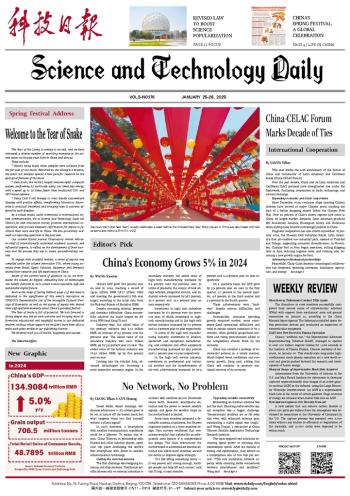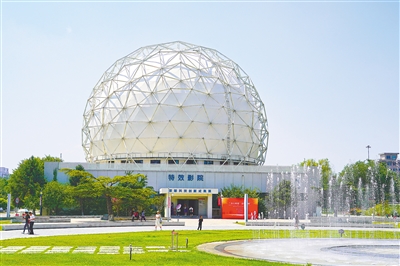
 |
| The special effects cinema of the Beijing Science Center screens science films, providing the public with an immersive environment. (PHOTO: VCG) |
A collective interview on China's Science and Technology Popularization Law was held on January 15, with officials giving detailed interpretation of the revised law issued in December 2024.
The revised law makes detailed provisions on promoting science popularization of emerging technologies, which helps improve public understanding of science and the application of new technologies.
Understanding new technologies
The sci-tech revolution and industrial transformation are changing the way people live and work. With the development of new technologies such as AI, big data and cloud computing, China's economy and society are undergoing comprehensive digital transformation. This makes the understanding of new technologies by society essential.
The revised law stipulates that when the country plans and implements major scientific and new technology projects, it needs to arrange intensive sci-tech outreach activities to ensure public understanding, recognition and support.
The law encourages a wide range of innovation projects to carry out science popularization around new technologies and new knowledge, encourages the application of new technologies in science popularization, and guides society to understand and use sci-tech achievements correctly.
Using web tech to popularize science
Shi Hong, an official of the Legislative Affairs Commission of the National People's Congress Standing Committee, said that one of the highlights of this revised law encourages the use of emerging media to carry out science popularization, and expanding the channels and means of science popularization.
The development of network-based information technology has brought new application scenarios for science popularization and science communication.
The Internet platforms provided important communication channels for science popularization.
According to Gu Yanfeng, deputy director of the science popularization department at the China Association for Science and Technology (CAST), CAST will leverage the role of China Science Communication, a national science popularization information platform, to strengthen cooperation and interaction with various media and platforms, and promote the public sharing of high-quality science popularization resources through various channels such as live broadcasting, short videos, and virtual reality (VR).
New technologies such as VR and AI provide opportunities for the exhibition design and display of science and technology venues. The China Science and Technology Museum uses modern digital technology to build multiple VR immersive exploration exhibition areas and immersive digital art space exhibition areas to enrich visitors' experience.
Creating a science popularization industry system
The revised law stipulates that the country shall develop the science popularization industry and encourage the establishment of science popularization enterprises.
Li Xin, an official from the Ministry of Science and Technology, said that it is necessary to form a complete chain of science popularization industry system such as creation, R&D, design, manufacturing and exhibition, promoting the development of the science popularization industry to meet the demands of economic and social development and the expectations of the public.

 Next
Next




